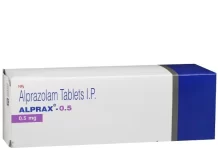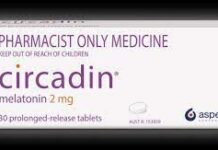Amlodipine is a prescription medication classified as a calcium channel blocker. It is primarily used to treat high blood pressure (hypertension) and certain types of chest pain (angina). Here’s information about its uses, benefits, and potential side effects: Amlodipine Tablet Uses Benefits and Side Effects
Uses and Benefits of Amlodipine:
- Hypertension: Amlodipine is commonly prescribed to manage high blood pressure. By relaxing and widening the blood vessels, it helps lower blood pressure, reducing the risk of cardiovascular events such as heart attacks and strokes.
- Angina: Amlodipine may be used to relieve symptoms of angina, a type of chest pain caused by reduced blood flow to the heart muscle. It improves blood supply to the heart, reducing the frequency and severity of angina episodes.
- Raynaud’s Phenomenon: Amlodipine can be prescribed for Raynaud’s phenomenon, a condition where blood vessels in the fingers and toes constrict excessively in response to cold temperatures or stress. Amlodipine helps relax the blood vessels, improving blood flow and reducing symptoms.
Side Effects of Amlodipine:
Amlodipine is generally well-tolerated, but like any medication, it can cause side effects. Common side effects include:
- Peripheral Edema: Amlodipine may cause fluid accumulation in the extremities, leading to swelling in the ankles and feet. Elevating the legs, wearing compression stockings, or adjusting the dosage can help manage this side effect.
- Flushing: Some individuals may experience a sensation of warmth or flushing of the skin while taking amlodipine.
- Dizziness or Lightheadedness: Amlodipine can occasionally cause dizziness or lightheadedness, especially when standing up quickly. It’s important to get up slowly from a sitting or lying position to minimize this side effect.
- Fatigue: Amlodipine may cause fatigue or tiredness in some individuals. It’s important to monitor your energy levels and communicate any concerns to your healthcare professional.
- Headache: Headaches can occur as a side effect of amlodipine, although they are usually mild and temporary.
Less common but potentially serious side effects of amlodipine may include:
- Rapid or Irregular Heartbeat: Amlodipine can affect heart rhythm in rare cases, leading to a rapid or irregular heartbeat. Seek medical attention if you experience any unusual heart rhythm.
- Allergic Reactions: Some individuals may experience allergic reactions to amlodipine, such as skin rash, itching, or swelling. If you notice any signs of an allergic reaction, discontinue use and seek immediate medical attention.
It’s important to take
amlodipine as prescribed by your healthcare professional and inform them about any pre-existing medical conditions or medications you are taking. They can provide personalized advice and monitor your response to the medication. If you have any concerns or experience troubling side effects, consult with your healthcare provider.
Amlodipine Tablet Uses Benefits and Side Effects Amlodipine Tablet in hindi Amlodipine Tablet in hindi







